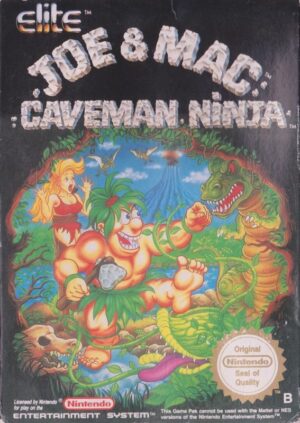Retro Replay Review
Gameplay
Galaga’s core gameplay is deceptively simple yet astonishingly addictive: you pilot a lone starfighter along the bottom of the screen, strafing left and right to avoid enemy fire while returning missiles to destroy waves of alien invaders. The controls are crisp and responsive, allowing for quick sidesteps and pinpoint firing. This immediacy of input makes every dodge and shot feel satisfying, encouraging you to keep chasing that high score.
(HEY YOU!! We hope you enjoy! We try not to run ads. So basically, this is a very expensive hobby running this site. Please consider joining us for updates, forums, and more. Network w/ us to make some cash or friends while retro gaming, and you can win some free retro games for posting. Okay, carry on 👍)
What elevates Galaga beyond a basic vertical shooter is its clever stage rotation and “challenge stages.” Every third level grants you a brief respite from enemy formation tactics and instead tasks you with hitting as many stationary or swooping aliens as possible within a time limit. These bonus rounds inject variety into the gameplay loop and reward precise shooting, giving you a welcome burst of speed that keeps the action from growing stale.
The tractor beam mechanic is a signature feature that adds tension and strategic depth. Certain enemy bosses will use their beam to snatch one of your ships, and if you’re skillful enough to shoot that boss down before it retreats, you’ll reclaim your ship and gain double firepower. This risk-reward scenario creates some of the most thrilling moments in Galaga, as you weigh the danger of facing swarms of foes with the lure of a potentially devastating upgrade.
Finally, the infinite progression of stages with escalating difficulty sustains the game’s addictive pull. As you advance, enemy formations become denser, bullets come faster, and your reflexes are tested more rigorously. The endgame never truly arrives—Galaga loops endlessly until you run out of lives—so the chase for that elusive million-point tally is both a personal challenge and a communal bragging right among arcade veterans.
Graphics
Released in 1981, Galaga’s graphics may appear modest by modern standards, but they retain a timeless charm that speaks to the brilliance of early arcade pixel art. Bright, neon-like sprites stand out crisply against the pitch-black background of space, ensuring that every enemy ship is instantly recognizable and that no projectile ever blends into the void.
The enemy designs are varied and memorable, ranging from standard fighters that swoop in predictable patterns to larger boss ships that loom ominously before deploying tractor beams. Animation frames are limited but effectively convey motion and danger—explosions flash vividly, and ships wiggle just enough to feel alive. Each wave’s choreography is distinct, so you can learn attack patterns by sight and sound alone.
Complementing the visuals is a minimalist HUD that shows lives remaining and your current score in clear, brightly colored text. It never distracts from the action, yet it provides essential information at a glance. On modern platforms or arcade cabinets with crisp displays, Galaga’s retro graphics shine with renewed clarity, proving that good design can outlast decades of technological change.
Story
Galaga’s narrative framework is as straightforward as its gameplay: you are the lone defender of Earth’s outposts, fending off a relentless alien invasion. There’s no deep lore or branching dialogue—just the pure essence of arcade-era storytelling where the goal is survival and high score supremacy.
Despite its simplicity, the premise is effective. Each level feels like another wave of the invasion you’re determined to halt, and rescuing your captured ship feels like reclaiming a vital piece of your lone resistance force. This minimalist plot works in harmony with the gameplay, never overstaying its welcome or obstructing the core action.
What Galaga lacks in cinematic cutscenes or elaborate backstories, it makes up for with player-driven narrative. Every run tells a personal tale of risk, skill, and tenacity as you learn enemy formations, optimize bonus stages, and strive to resist increasingly aggressive attacks. In that sense, the story is what you bring to the table—every high-score run is its own saga of triumph against the odds.
Overall Experience
Playing Galaga today is akin to stepping back into an arcade time capsule. There’s an undeniable thrill in mastering its patterns, nailing bonus stages, and pushing your reflexes to the limit. Whether you’re on a dedicated arcade cabinet, a home console collection, or a mobile port, the core experience remains intact: straightforward controls, escalating challenge, and that sweet rush every time you see “Game Over” replaced by your final score.
Replayability is Galaga’s greatest asset. The infinite level design means there’s always another stage to conquer and another points milestone to reach. Even casual players can enjoy short sessions racking up bonus points, while hardcore fans will delight in perfecting every trick—from dual-ship volleys to chaining consecutive challenge stages without missing a shot.
Accessibility is also a strong suit. You don’t need to pore over tutorials or complex menus—just insert a coin (or tap on a screen) and begin blasting aliens. This immediacy makes Galaga a fantastic pick-up-and-play title for all ages, whether you’re introducing newcomers to the golden era of arcades or reliving your own childhood memories.
In the landscape of modern shooters, Galaga stands as a testament to enduring game design. Its blend of simplicity and strategic depth, coupled with iconic graphics and sound, ensures it remains a classic worth owning. If you seek a quick adrenaline fix or a long-term high score obsession, Galaga’s interstellar battlefield awaits.
 Retro Replay Retro Replay gaming reviews, news, emulation, geek stuff and more!
Retro Replay Retro Replay gaming reviews, news, emulation, geek stuff and more!









Reviews
There are no reviews yet.